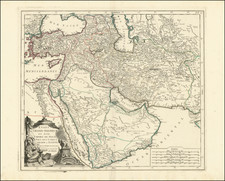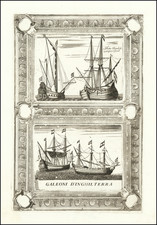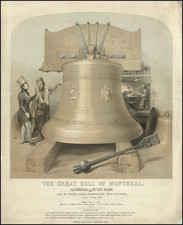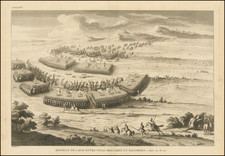Modern Heresy! Depiction of the Holy Kinship and St. Anne
An engraved genealogy of Mary and Joseph as understood by the people of the late 1400s. The genealogy illustrated how key figures in the Biblical canon are related to one another and Jesus. Accompanying the family tree are several scenes from the lives of John the Baptist and Saint Anne. These scenes are connected by a vine held by the husbands of Saint Anne.
This piece is exceptionally interesting because it reflects an older interpretation of Jesus and his family. This view, known as the Holy Kinship, is the extended family of Jesus originating from Saint Anne, the mother of Mary. This belief suggests that Anne was the grandmother to Jesus, John the Baptist, and five of the twelve apostles. All these people are pictured along the family vine to illustrate their divinity and place of importance in the Medieval hierarchy of worship. Depictions of the Holy Kinship were quite popular in religious art of the late 1400s and early 1500s, especially in Germany which explains the inclusion of this engraving in the Nuremburg Chronicle.
The inclusion of the Holy Kinship also puts a unique bit of historical context on this piece. Before the Council of Trent (1545-1563), Christian doctrine was far from standardized, and some noncanonical texts informed the beliefs of Medieval Christians. These included the story of St. Anne whose three marriages (trinubium) resulted in three Marys, all of whom were mothers to key figures in the Bible. Anne was honored as a matriarch of Christendom and worshipped like the Virgin Mary. After the Council of Trent, the Church made a concerted effort to standardize doctrine and root out apocryphal tales such as those of Anne and her descendants. As a result, notions of the Holy Kinship were viewed as heretical with Mary supplanting Anne as the matriarchal symbol of Christianity.
This leaf comes from Hartmann Schedel's famous 1493 publication Nuremberg Chronicle (Liber Chronicarum) which related the history of the world from biblical to contemporary times. Overall, this leaf is unique in that it illustrates a bygone belief that was popular for the time and place Schedel published his work. A piece of religious history with a great story behind it.
Hartmann Schedel (1440-1514) was a physician, book collector, and writer whose most famous work, the Liber Chronicarum (Nuremberg Chronicle), included some of the first printed views of many cities in Europe and across the world.
Schedel was born and died in Nuremberg, but he also traveled for his education. From 1456 to 1463 he lived in Leipzig, where he attended the University of Leipzig and earned his MA. From there he went to Padua, where he earned a Doctor of Medicine in 1466. After university, he worked for a time in Nördlingen and then returned to Nuremberg. In 1482 he was elected a member of the Great Council of Nuremberg.
The Chronicle was published in 1493. Besides this major work, one of Schedel’s most enduring legacies is his magnificent manuscript and printed book collection, one of the largest of the fifteenth century. In 1552, Schedel's grandson, Melchior Schedel, sold about 370 manuscripts and 600 printed works from Hartmann Schedel's library to Johann Jakob Fugger. Fugger later sold his library to Duke Albert V of Bavaria in 1571. This library is now mostly preserved in the Bayerische Staasbibliothek in Munich.
Among the surviving portions of Schedel's library are the records for the publication of the Chronicle, including Schedel's contract with Anton Koberger for the publication of the work and the financing of the work by Sebald Schreyer and Sebastian Kammermeister, as well as the contracts with Wohlgemut and Pleydenwurff for the original artworks and engravings. The collection also includes original manuscript copies of the work in Latin and German.













![[ La Perouse and Louis XVI ] Louis XVI donne des instructions a Mr de la Perouse pour son voyage autour du monde, juillet 1785](https://storage.googleapis.com/raremaps/img/small/104236.jpg)
![[Heightened with Gold Leaf! -- Paul's Travels ] De Reysen Christi Des Heyland en Pauli met andere syne Bloedgetuygen](https://storage.googleapis.com/raremaps/img/small/72900.jpg)